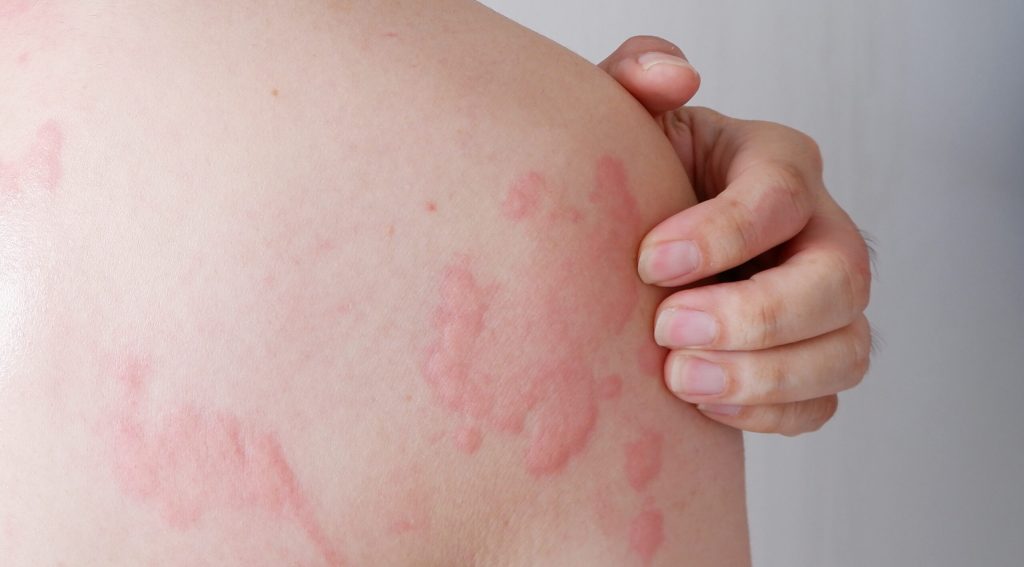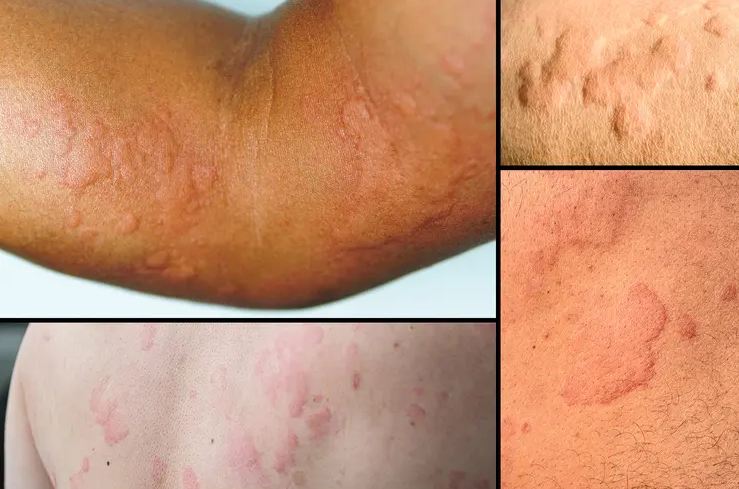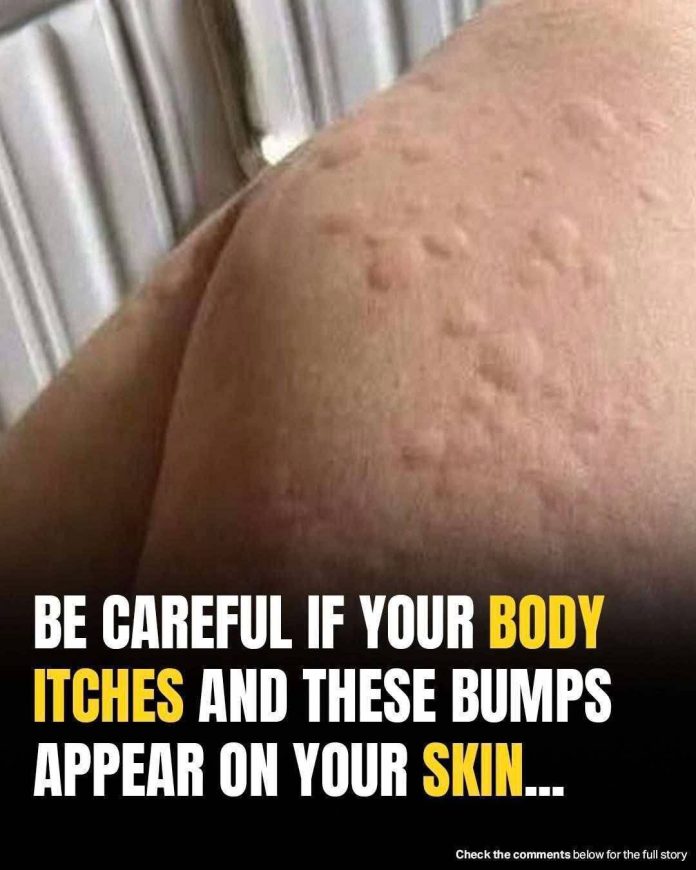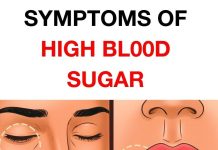Hives medically known as urticaria manifest as itchy, raised welts on the skin that can vary in size, shape, and location. While many people assume they’re simply the result of an obvious allergy, the truth is far more nuanced. These lesions often appear suddenly, sometimes merge into larger patches, and then vanish within hours, only to reappear elsewhere. Even though each individual welt may fade quickly, the overall condition can persist for days, weeks or even longer in chronic cases.
The underlying mechanism involves certain immune cells triggering an almost instantaneous chemical response beneath the skin. This makes hives a visible sign of something happening internally — not just an external skin reaction.
The Immune Mechanism Behind the Welts
The process begins when immune cells called mast cells release histamine and other inflammatory mediators into the surrounding tissue. This causes small blood vessels to dilate and become leaky, allowing fluid to escape into the nearby dermis. The result: those classic swollen, red or skin-colored welts that feel itchy or burn. While a single hive may vanish within 24 hours, many individuals experience successive outbreaks as new vessels leak and new welts form. Although the body eventually reabsorbs the fluid and the immediate reaction subsides, the triggers can recur, and the cycle continues. It’s also important to distinguish between typical hives and a related swelling condition called angioedema. Angioedema involves deeper tissue layers and often affects areas like eyelids, lips, or throat. It tends to last longer than surface hives and may carry more serious risks if it involves breathing passages.

Types and Duration: Acute Versus Chronic
Clinicians often separate hives into two broad categories based on duration. “Acute” hives refer to outbreaks lasting up to six weeks; these frequently have an identifiable trigger — for example, a recent medication, infection, or exposure. On the other hand, “chronic” hives extend beyond six weeks, often recur unpredictably, and commonly fall into the “idiopathic” (unknown cause) category. Despite extensive testing, many cases of chronic hives cannot pinpoint a single cause, making management more complex. Knowing whether you are dealing with acute or chronic urticaria helps inform not just treatment, but expectations around how long the condition may last and whether further investigation is needed.
Surprising Triggers That People Overlook
When hives show up, many immediately blame food allergies. While those are certainly possible, there are a surprising number of other triggers that often go unrecognized. Below are some of the lesser-known culprits:
Physical stimuli
- Gentle scratching or rubbing the skin (dermatographism) can trigger welts.
- Cold exposure, such as cold water or cold air, may lead to a cold-induced form of hives.
- Sustained pressure (for example, from tight clothing, backpacks or belts) can provoke pressure-related welts.
- Sun exposure or specific wavelengths of light may cause solar urticaria.
- A rise in core body temperature — from exercise, hot baths, or fever — can lead to cholinergic urticaria, characterized by numerous small, itchy welts.
Allergic reactions
Classic IgE-mediated allergies: certain foods (nuts, shellfish, eggs), medications (especially antibiotics or NSAIDs), insect bites or stings, and contact with latex or other allergens. These reactions often appear quickly after exposure but are sometimes mis-attributed or delayed.
Internal triggers & stress
- Viral or bacterial infections can prompt hives as a side effect of immune activation.
- Autoimmune conditions may provoke mast cell activation even without a clear external trigger.
- Emotional stress itself can act as a catalyst for outbreaks: the body’s hormonal response to stress may inadvertently activate immune cells.
How to Manage and When to Seek Help
Most hives are benign and will resolve on their own. Simple relief measures include wearing loose clothing, applying cool compresses, and avoiding known irritants. Over-the‐counter non-sedating antihistamines are a good starting point to reduce itching and swelling. For more persistent, frequent, or severe outbreaks — especially when the face or throat is involved — medical evaluation is important. Oral corticosteroids may be required for short periods, and in cases of chronic urticaria, specialized therapies (biologics) may be considered when conventional treatments fail. Identifying triggers can also aid long-term control. While it may not always be possible to find a single cause, tracking onset timing, diet, activities, exposure to temperature changes and stress levels can provide helpful patterns.

Finding Balance
In the end, hives are a sign that your immune system is reacting to something — not always what you expect. While many think allergy alone causes them, the full list of triggers includes physical, chemical, emotional, and internal factors. The key lies in attentive observation, gentle symptom management, and seeking professional help when necessary. In doing so, you can move beyond simply reacting to the rash and toward understanding the root of what’s really causing it.

















